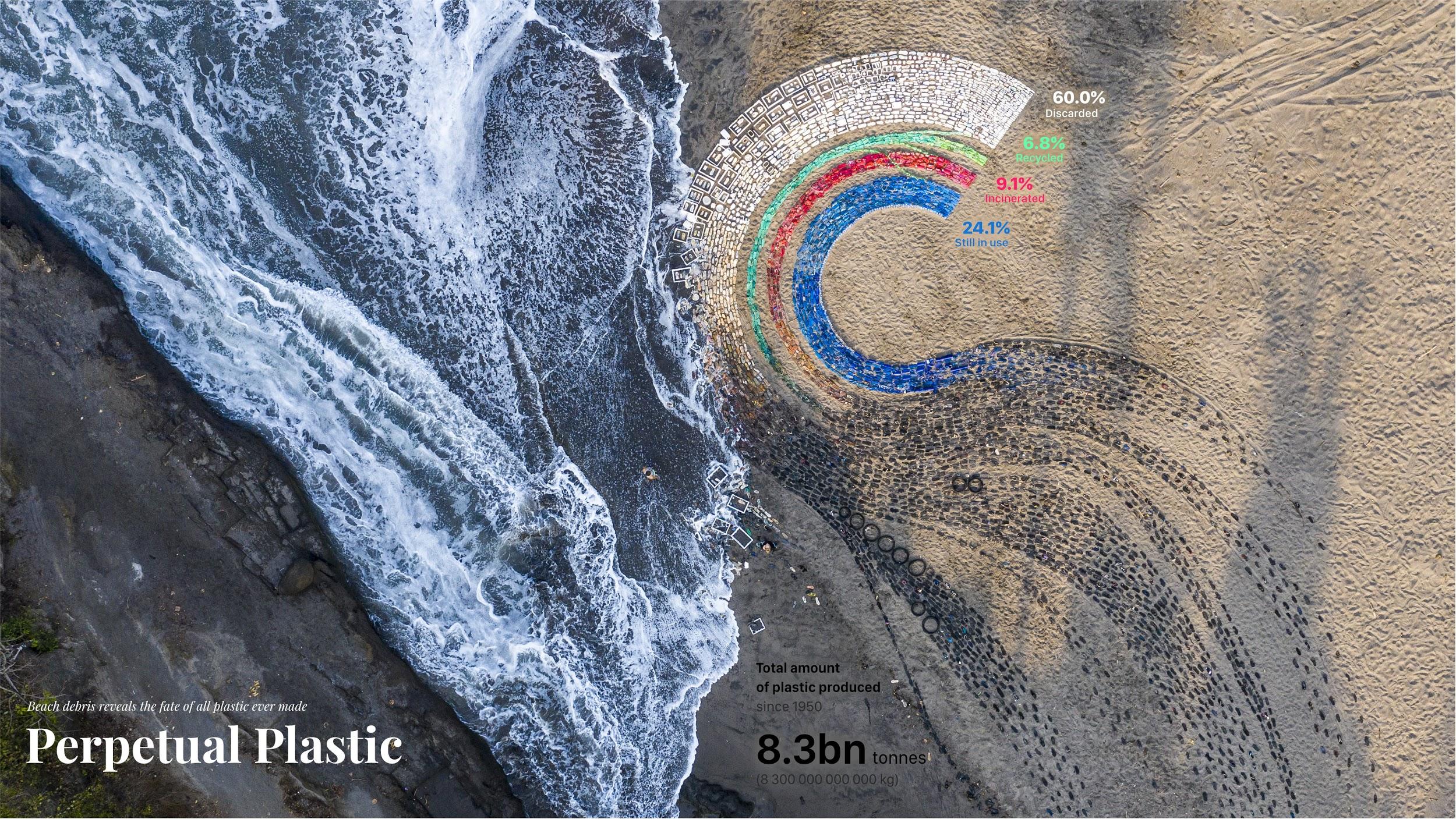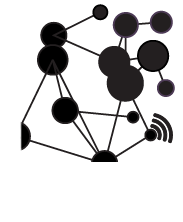When we think of data we typically picture things like big numbers on a screen, binary digits flowing by like cut scenes from the Matrix, or an array of charts, graphs and maps comprising a data dashboards. In a recent panel discussion held by Northeastern University’s Centre for Design entitled ‘The Physical Life of Data’ they considered that ‘what we describe as “data” is no longer limited to symbols and numbers’. Here the study and practice of design for information communication is embracing wider currents in the study of material culture’s relationship to the digital, focused on the ‘expressions and performances of digital information’. These material expressions are typically encountered though considerations of usability, accessibility, embodied experience and situated practice: questions about who, how, when, where and why people interact with the technology. These are key concerns in our work in the design of Connected Environments.
The panel’s moderator Dietmar Offenhuber began the session by highlighting the relationship between data and the physical things they represent as explored in his own research Waste Is Information: Infrastructure, Legibility and Governance (2017). Through a number of waste tracking and participatory sensing projects this work highlighted the role that collective experience and co-creation play in the transmission and reception of information. Dietmar also pointed to research recommending a reassessment of the role of visualisation in the communication and retention of information relative to the other senses, particularly the haptic sense of touch.
![[Image – Embodying Information via Data Culture Group]](https://connected-environments.org/wp-content/uploads/2021/02/Embodied_Information_Data_Culture_Group.png)
Rahul Bhargava and Laura Perovich followed by discussing their project ‘Embodying Information’ which explores theatre and dance as a means for communicating information in ways that increase collective engagement and empowerment. The point of departure for their work is the fact that much of the data that matters to us represents people, but typically only those aspects that can be readily quantified or subjected to classification. In her prior work in data physicalisation, the representation of data as physical objects, Laura came to recognise the impact that preconceived attitudes and prior knowledge had in determining peoples capacity for understanding and acting upon visual and abstract information.
Rahul explained that the current project was developed as a necessary means for ‘overcoming barriers to “math” thinking’. Performance engages the affective aspects of information and provides a space that enables people to externalise and share their experiences. Their ‘Data dance’ workshops invite participants to interpret information through movement, while ‘Data skit’ workshops look at how people relate to data when they are asked to find a story in it to perform. This provides for the development of data literacy as a collective and mutually supportive activity that can be used as a means to promote wider civic engagement.
![[Image – Perpetual Plastic: Beach debris reveals the fate of all plastic ever via Perpetual Plastic]](https://connected-environments.org/wp-content/uploads/2021/02/Perpetual_Plastic-1024x576.jpg)
Sky Moret discussed these themes of collective activity and data physicalisation further in relation to the project ‘Perpetual Plastic’ which sought to embody data on marine pollution in a more accessible, engaging and understandable form. The project communicated the problem of ocean-borne plastics in the Pacific ocean by reinterpreting an existing scientific data visualisation as a physical installation on a beach in Bali, made from washed up plastic objects. The flow and proportion of plastic objects represented in the original visualisation was reimagined as a physical, wave-like Sankey diagram made of disposable flip-flops, bundles of synthetic fish nets, and disposed plastic cups. Unlike the scientific visualisation which might typically have be created by a single individual at their computer, the Perpetual Plastic installation was created with the participation of the local community who helped collect and arrange the debris used in the installation.
The final presentation was presented by Dan Lockton of the Imaginaries Lab. Their work examines design practice through the lens of ‘imaginaries’: a word used by sociologists to indicate the shared conceptions and frames of reference that people develop help them make sense of their relationship to wider social formations and material reality. At the most basic level imaginaries represent our everyday, taken-for-granted, assumptions about the world around us. The intuition behind Dan’s practice is that these imaginaries shape the world around us but also leave traces to be read in the cultural and physical artefacts they produce. In this way material artefacts provide a means for exploring and articulating different, perhaps more preferable, imaginaries. The aim of Dan’s practice is to get these imaginaries out of people’s heads by manifesting them in tangible form.
![[Image – Powerchord via Imaginaries Lab]](https://connected-environments.org/wp-content/uploads/2021/02/Power_Chord_Imaginaries_Lab.jpg)
An early project ‘Powerchord’ focused on energy consumption and addressed the invisibility of energy consumption through sonification. By turning the use of energy into sound in real-time the project helped people more easily understand the amount of energy they were using, and gave them the ability to act on it. This is just one of a number of ‘qualitative’ displays and interfaces which prompt thought, action and responsibility by appealing to other sensory modalities beside the visual and what can be immediately seen.
![[Image – Mental Landscapes via Imaginaries Lab]](https://connected-environments.org/wp-content/uploads/2021/02/Mental_Landscapes_Imaginaries_Lab-1024x698.jpg)
Another aspect of the Imaginaries Lab’s practice is the use of metaphor to help designers and their communicate abstract concepts. For example, using landscape metaphors and encouraging designers to map and build models of complex problems. The imaginary or ‘mental landscapes‘ then become more easily navigable and communicable as a result. Dan closed his talk by pointing to the way in which the qualities of physical things in the world are a form of data: water trapped between to panes of glass in a train carriage window acts as a water level, visually communicating information about the motion of the train; and cracks in a pavement encode the history of the physical and human forces acting on the paving slabs, offering them for different forms of forensic-like enquiries.
Our work in the Connected Environments lab is fundamentally concerned with the sensing, analysis and representation of physical environments by digital means. The wider aim of this work is to improve those environments and enhance the experience of those that inhabit them. To that end we also need to be able to communicate and engage with people who may not have ready access and familiarity with digital means, or who may see the world in quite different ways. We cannot take data literacy, digital inequalities, physical capabilities or common understandings for granted. We need to keep a view of the who, what, where, when and why of the data we work with. And we need to be aware that everything we do has a material cost. Engaging with the physical life of data should be a fundamental concern in the design of Connected Environments.


